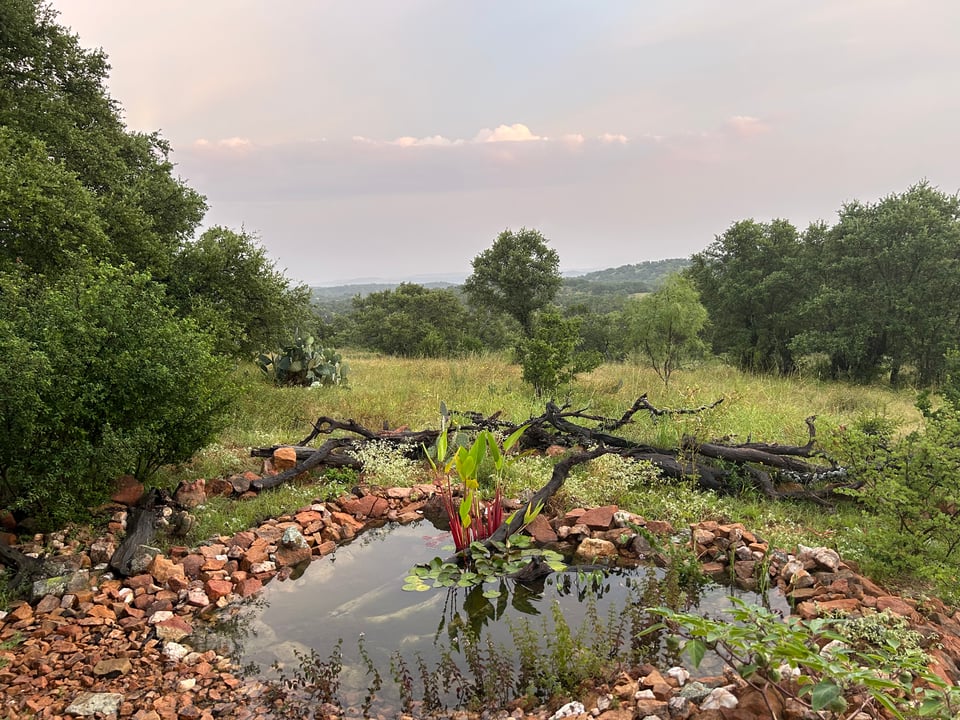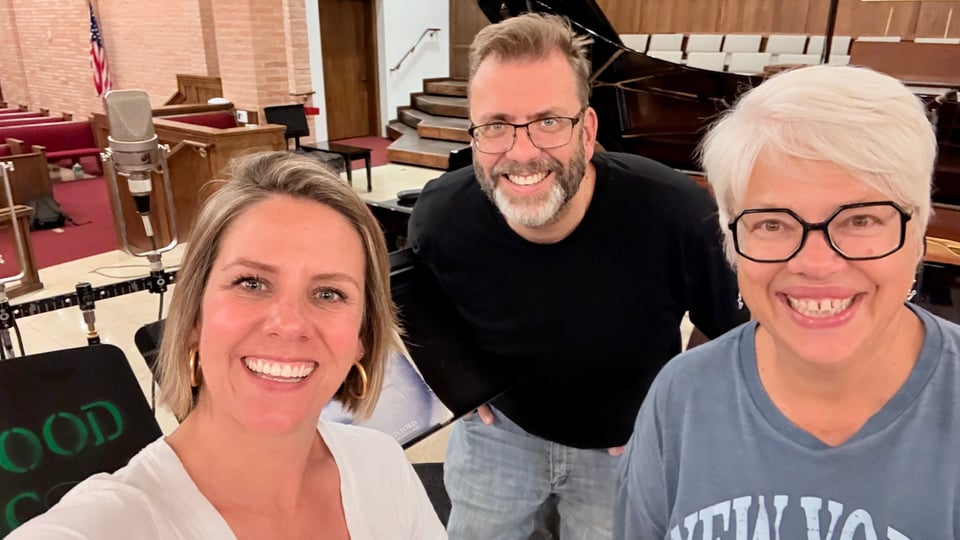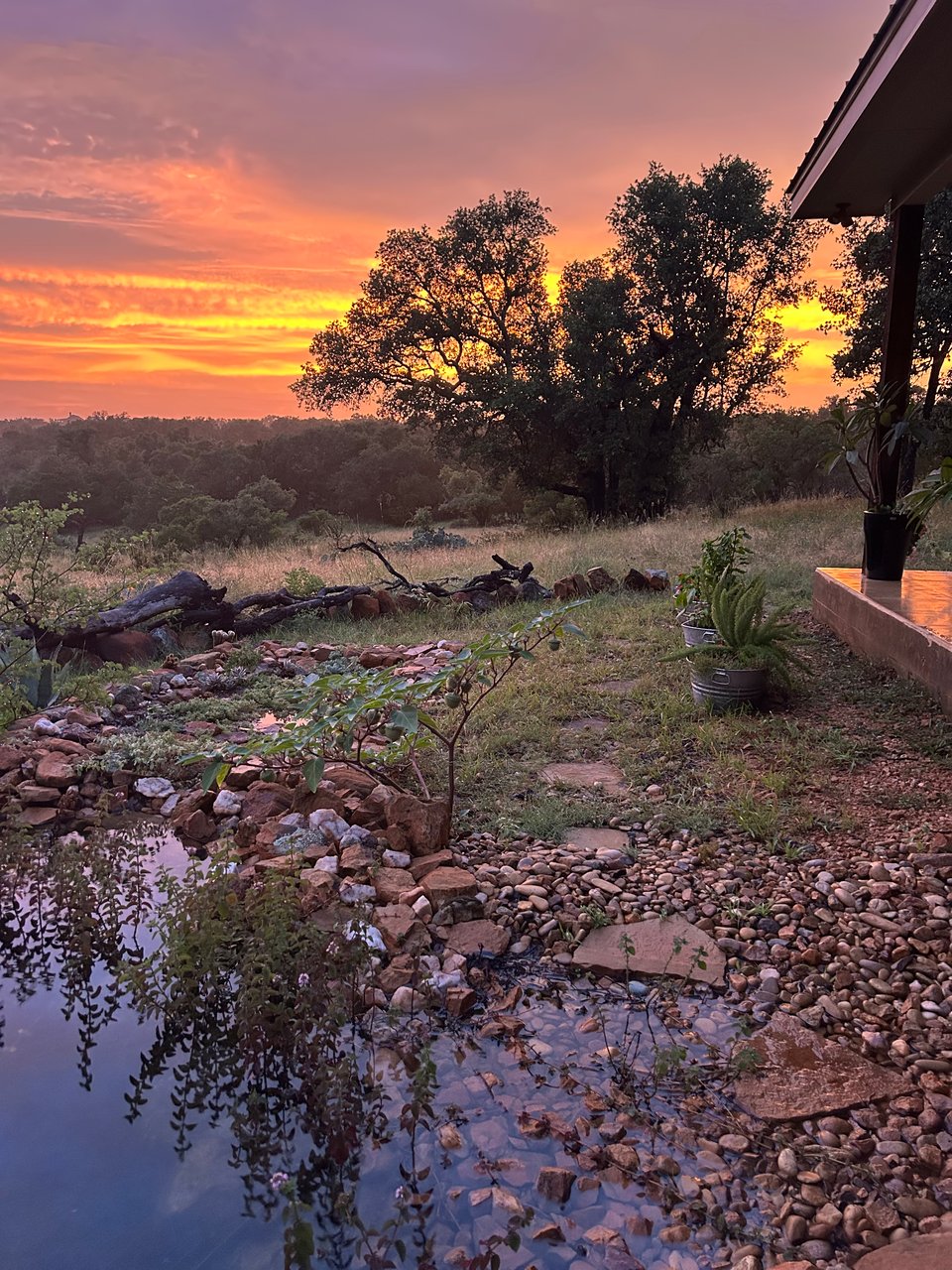The whole picture
where do you look?

Cool drizzle falls on this atypically mild July day. Looking out from our porch, you see land green and grateful for much needed rain, caressed by soft air under a benign sky. I sit at my computer answering message upon message from friends on three continents who have seen the news footage of the swollen river eleven miles to the north and the destroyed campsites thirty miles south. From our safe elevation, we spent last night after the storms listening to the rare sound of water rushing through the wash at the bottom of our hill. This morning we spent figuring out where to send donations for the rescue efforts.
It feels crazy to look out on this gentle landscape knowing that confusion and loss reign just down the road. Our porch frames the land like a picture, one lovely snapshot that is all the world my eyes can perceive in this moment, perfectly true and absolutely incomplete.

Emily, and I finished recording our next project just before the long weekend. The smiles you see in the picture are real. So were the undocumented f-bombs I unleashed earlier in the day at one stretch of music I couldn’t quite nail. We ended up recording just a few measures at a time so that Brad, our engineer, would have a bank of flawless connective material to draw on when editing.
It shook my confidence, hard. “Everybody does this,” Brad assured us, but I thought not me. Why? I’ve never been a flawless pianist. And I’ve done plenty of recording: I know that listener expectations are different when the performance isn’t live, and I have experience regulating my own impatience and fatigue. So where was this weird burst of hurt pride coming from?
I’ve been thinking so much about how we assemble images to tell our stories, and how we react to the images and stories that we see. I wrote a little about this two weeks ago in conjunction with a different recording project (for the record, I also dropped a few f-bombs during that one). Then, I was thinking about the ever trickier concept of ownership: whose work are you seeing, whose story are you hearing? Maybe because those ideas were fresh in my mind, this latest recording hit different. Would it even be fair to play the final product for people and call it mine?
I already know the answer to that, of course: the final product isn’t mine, it’s ours. Even live performances don’t belong to any one artist individually. We’re always part of a whole. Recording is a art form separate and distinct from live performance, especially now, several generations into digital capture and editing. Emily and I have finished most of our work on this art piece as most of Brad’s work begins. At the end of the road, it belongs to all three of us. And to the composers, our mentors, the piano technician, the keepers of the space we used, my university’s support system...
I can totally accept that view of creators and creation. It inspires me to think about the big village behind any creative endeavor. And yet, there’s something about it that doesn’t ring true - no, that isn’t true on a fundamental level. Even if everyone knows that everyone chooses the best lighting and the cleanest takes before publishing, even if we all know that the pictures are not quite honest, available evidence shows that this knowledge isn’t making us wiser.
Every day when I’m teaching, I try to lead students away from good/bad binaries onto a more complex and nuanced path. I tell them that they will fail on the way to breakthrough and that it’s okay. I tell them not to be afraid of making mistakes.
Yet I shed self-pitying tears in Houston at the thought of making a few four-measure takes. It’s because I am afraid. Afraid of getting older, less reliable, less resilient; of judgment; of how quickly everything can change. But it’s also because I know my students are both intimidated by recording and made cynical by it. “Anybody can sound good with an editor,” they say, trying to play it cool, and then they come into my studio and I wonder why they are so reticent to take a chance. They don’t believe in our smooth products, and they believe in them too much.
It’s a consolation to think of recordings as the best results of multiple artists’ efforts. But it’s probably more important to get up, again and again, as often as possible, play our music live, experience our imperfections. How else can we encourage other artists to keep investing in the lifelong work of physical and musical effort, achievement, and discovery? How else can we lay honest claim to what is ours, what we have made? How else can we make a real case for our work as something beyond content, to be farmed and repurposed by anyone disconnected from the joy of this work by fear or cynicism?
The same uncanny combo of faith and doubt runs through the awful discourse following the Hill Country floods. The images and stories are already being ground up into content, restrung to fit a story or boost engagement or whatever. There’s so much we need to learn in this terrible moment, once the brutal work of rescue and recovery is done. The survivors have new stories to tell us. Long time residents of the area can lend historical knowledge and perspective. Scientists can tell us about climate trends. There is so much to evaluate about what works and what doesn’t: our warning systems, our roads, our cell phone coverage, our social service mechanisms.
At this moment, do we still collectively possess the ability to listen? Can we make space and calm for listening to happen? Can we, trained as we are on content creation and curation and “engagement” in every moment of our lives, actually shut up and engage with the people who can tell us what just happened and what might happen next?
Our collective practice of posting perfect edits has made a world both reactive and stuck, one easily prompted to happy or sad tears at sweet or devastating images while the ability to bring them coherently together fades away.
The music-making that preceded our recording and is its basis was real. My connection with Emily is real, as is our connection to the created music we performed. Brad’s expertise is real. The way we worked together was real, giving and taking advice, joking, resting, trying, snacking, laughing, crying, dropping f-bombs. The recording will be a shiny and kind of unreal snapshot of all that, but it won’t change the realness itself.
I’m thinking of that as I answer texts from friends. They might have been moved by a picture, but they’re reaching out to us. We have to help each other stay more connected to one another here on the ground than we are in the cloud, listening and bringing over the canned goods and taking over the shift and fostering the animals and figuring out what to fix one small step at a time.
If we take it in small sections, we might build up a reserve from which we can make something really remarkable.
Better than you’d expect from us, even.

Visit the Texas Tribune for information on how to help in the aftermath of the Hill Country floods.
Thanks to Emily, Brad, Kris, Cody, and Cameron.
-
Beautiful post and photos, Kathy. Thank you for writing and sharing this. Congratulations on the recording, and I'm so glad you're safe. So sorry for the tragedy around you and so grateful for the beautiful souls coming together for each other. Take care.
-
A beautiful, thoughtful reflection, Kathy Kelly....you are a gem, and such an important giver / contributor to the world. Be well, kind, brave, courageous soul!
Add a comment: